The relationship between conspecific density and the probability of emigrating from a patch can play an essential role in determining the population-dynamic consequences of an Allee effect. In this paper, we model a population that inside a patch is diffusing and growing according to a weak Allee effect per-capita growth rate, but the emigration probability is dependent on conspecific density. The habitat patch is one-dimensional and is surrounded by a tuneable hostile matrix. We consider five different forms of density dependent emigration (DDE) that have been noted in previous empirical studies. Our models predict that at the patch-level, DDE forms that have a positive slope will counteract Allee effects, whereas, DDE forms with a negative slope will enhance them. Also, DDE can have profound effects on the dynamics of a population, including producing very complicated population dynamics with multiple steady states whose density profile can be either symmetric or asymmetric about the center of the patch. Our results are obtained mathematically through the method of subsuper solutions, time map analysis, and numerical computations using Wolfram Mathematica.
1.
Introduction
The class of normalized analytic functions in the open unit disc Δ={z∈C:|z|<1} denoted by Ω consists of the functions f of the form
where f′(0)−1=f(0)=0. Let ℓ(z)∈Ω defined by
Then the Hadamard product, also known as the convolution of two function f(z) and ℓ(z) denoted by f∗ℓ is defined as
Moreover, f(z)≺ℓ(z), if there exist a Schwartz function χ(z) in A, satisfying the conditions χ(0)=0 and |χ(z)|<1, such that f(z)=ℓ(χ(z)). The symbol ≺ is used to denote subordination.
Let S denote the subclass of Ω of univalent functions in Δ. Let P,C,S∗ and K represent the subclasses of S known as the classes of Caratheodory functions, convex funtions, starlike functions, and close-to-convex functions, respectively.
The concept of bounded rotations was introduced by Brannan in [7]. A lot of quality work on the generalization of this concept has already been done. Working in the same manner, we have defined the following new classes.
Definition 1.1. Let
be analytic in Δ such that ν(0)=1. Then for m≥2, ν(z)∈Pm(ℏ(z)), if and only if
where ℏ(z) is a convex univalent function in Δ and νi(z)≺ℏ(z) for i=1,2.
Particularly, for m=2, we get the class P(ℏ(z)).
Definition 1.2. Let f(z) and ℓ(z) be two analytic functions as defined in (1.1) and (1.2) such that (f∗ℓ)′(z)≠0. Let ℏ(z) be a convex univalent function. Then for m≥2, f∈Vm[ℏ(z);ℓ(z)] if and only if
Particularly, for m=2, we will get the class C[ℏ(z);ℓ(z)]. So, a function f∈C[ℏ(z);ℓ(z)] if and only if
Definition 1.3. Let f(z) and ℓ(z) be the functions defined in (1.1) and (1.2), then f(z)∈Rm[ℏ(z);ℓ(z)] if and only if
Particularly, for m=2, we get the class SΛ[ℏ(z);ℓ(z)], i.e., f∈SΛ[ℏ(z);ℓ(z)] if and only if
From (1.5) and (1.6) it can be easily noted that f∈Vm[ℏ(z);ℓ(z)] if and only if zf′(z)∈Rm[ℏ(z);ℓ(z)]. For m=2, this relation will hold for the classes C[ℏ(z);ℓ(z)] and SΛ[ℏ(z);ℓ(z)].
Definition 1.4. Let f(z) and ℓ(z) be analytic function as defined in (1.1) and (1.2) and m≥2. Let ℏ(z) be the convex univalent function. Then, f∈Tm[ℏ(z);ℓ(z)] if and only if there exists a function ψ(z)∈SΛ[ℏ(z);ℓ(z)] such that
It is interesting to note that the particular cases of our newly defined classes will give us some well-known classes already discussed in the literature. Some of these special cases have been elaborated below.
Special Cases: Let ℓ(z) be the identity function defined as z1−z denoted by I i.e., f∗ℓ=f∗I=f. Then
(1) For ℏ(z)=1+z1−z we have Pm(ℏ(z))=Pm,Rm[ℏ(z);ℓ(z)]=Rm introduced by Pinchuk [23] and the class Vm[ℏ(z);ℓ(z)]=Vm defined by Paatero [21]. For m=2, we will get the well-known classes of convex functions C and the starlike functions SΛ.
(2) Taking ℏ(z)=1+(1−2δ)z1−z, we get the classes Pm(δ),Rm(δ) and Vm(δ) presented in [22]. For m=2, we will get the classes C(δ) and SΛ(δ).
(3) Letting ℏ(z)=1+Az1+Bz, with −1≤B<A≤1 introduced by Janowski in [12], the classes Pm[A,B],Rm[A,B] and Vm[A,B] defined by Noor [16,17] can be obtained. Moreover, the classes C[A,B] and SΛ[A,B] introduced by [12] can be derived by choosing m=2.
A significant work has already been done by considering ℓ(z) to be different linear operators and ℏ(z) to be any convex univalent function. For the details see ([4,9,18,19,24]).
The importance of Mittag-Leffler functions have tremendously been increased in the last four decades due to its vast applications in the field of science and technology. A number of geometric properties of Mittag-Leffler function have been discussed by many researchers working in the field of Geometric function theory. For some recent and detailed study on the Geometric properties of Mittag-Leffler functions see ([2,3,31]).
Special function theory has a vital role in both pure and applied mathematics. Mittag-Leffler functions have massive contribution in the theory of special functions, they are used to investigate certain generalization problems. For details see [11,26]
There are numerous applications of Mittag-Leffler functions in the analysis of the fractional generalization of the kinetic equation, fluid flow problems, electric networks, probability, and statistical distribution theory. The use of Mittag-Leffler functions in the fractional order integral equations and differential equations attracted many researchers. Due to its connection and applications in fractional calculus, the significance of Mittag-Leffler functions has been amplified. To get a look into the applications of Mittag-Leffler functions in the field of fractional calculus, (see [5,27,28,29,30]).
Here, in this article we will use the operator Hγ,κλ,η:Ω→Ω, introduced by Attiya [1], defined as
where η,γ∈C, ℜ(λ)>max{0,ℜ(k)−1} and ℜ(k)>0. Also, ℜ(λ)=0 when ℜ(k)=1;η≠0. Here, μγ,κλ,η is the generalized Mittag-Leffler function, defined in [25]. The generalized Mittag-Leffler function has the following representation.
So, the operator defined in (1.8) can be rewritten as:
Attiya [1] presented the properties of the aforesaid operator as follows:
and
However, as essential as real-world phenomena are, discovering a solution for the commensurate scheme and acquiring fundamentals with reverence to design variables is challenging and time-consuming. Among the most pragmatically computed classes, we considered the new and novel class which is very useful for efficiently handling complex subordination problems. Here, we propose a suitably modified scheme in order to compute the Janowski type function of the form ℏ(z)=(1+Az1+Bz)β, where 0<β≤1 and −1≤B<A≤1, which is known as the strongly Janowski type function. Moreover, for ℓ(z), we will use the function defined in (1.9). So, the classes defined in Definition 1.1–1.4 will give us the following novel classes.
Definition 1.5. A function ν(z) as defined in Eq (1.3) is said to be in the class P(m,β)[A,B] if and only if for m≥2 there exist two analytic functions ν1(z) and ν2(z) in Δ, such that
where νi(z)≺(1+Az1+Bz)β for i=1,2. For m=2, we get the class of strongly Janowki type functions Pβ[A,B].
Moreover,
where η,γ∈C, ℜ(λ)>max{0,ℜ(k)−1} and ℜ(k)>0. Also, ℜ(λ)=0 when ℜ(k)=1;η≠0. It can easily be noted that there exists Alexander relation between the classes V(m,β)[A,B;γ,η] and R(m,β)[A,B;γ,η], i.e.,
Throughout this investigation, −1≤B<A≤1, m≥2 and 0<β≤1 unless otherwise stated.
2.
Preliminaries
Lemma 2.1. ([13]) Let ν(z) as defined in (1.3) be in P(m,β)[A,B]. Then ν(z)∈Pm(ϱ), where 0≤ϱ=(1−A1−B)β<1.
Lemma 2.2. ([8]) Let ℏ(z) be convex univalent in Δ with h(0)=1 and ℜ(ζℏ(z)+α)>0(ζ∈C). Let p(z) be analytic in Δ with p(0)=1, which satisfy the following subordination relation
then
Lemma 2.3. ([10]) Let ℏ(z)∈P. Then for |z|<r, 1−r1+r≤ℜ(ℏ(z))≤ |ℏ(z)|≤1+r1−r, and |h′(z)|≤2rℜℏ(z)1−r2.
3.
Main results
Theorem 3.1. Let ϱ=(1−A1−B)β. Then for ℜ(γκ)>−ϱ,
Proof. Let f(z)∈R(m,β)[A,B,γ+1,η]. Set
then φ(z)∈P(m,β)[A,B]. Now, Assume that
Plugging (1.10) in (3.2), we get
It follows that
After performing logarithmic differentiation and simple computation, we get
Now, for m≥2, consider
Combining (3.3) and (3.4) with the similar technique as used in Theorem 3.1 of [20], we get
where
for i=1,2. Since φ(z)∈P(m,β)[A,B], therefore
for i=1,2. By using Lemma 2.1 and the condition ℜ(γκ)>−ϱ, we have
where ϱ=(1−A1−B)β. Hence, in view of Lemma 2.2, we have
for i = 1, 2. This implies ψ(z)∈P(m,β)[A,B], so
which is required to prove.
Theorem 3.2. If ℜ(λη)>−ϱ, where ϱ=(1−A1−B)β, then
Proof. Let f(z)∈R(m,β)[A,B,γ,η]. Taking
we have φ(z)∈P(m,β)[A,B]. Now, suppose that
Applying the relation (1.11) in the Eq (3.6), we have
arrives at
So by the logarithmic differentiation and simple computation we get,
Therefore, for m≥2, take
Combining Eqs (3.6) and (3.7) using the similar technique as in Theorem 3.1 of [20], we get
where
for i=1,2. Since φ(z)∈P(m,β)[A,B], therefore
for i=1,2. Applying Lemma 2.1 and the condition ℜ(ηλ)>−ϱ, we get
where ϱ=(1−A1−B)β. Hence, by Lemma 2.2, we have
for i = 1, 2. This implies ψ(z)∈P(m,β)[A,B], so
which completes the proof.
Corollary 3.1. For m=2, if ℜ(γκ)>−ϱ, where ϱ=(1−A1−B)β. Then
Moreover, if ℜ(λη)>−ϱ, then
Theorem 3.3. Let ϱ=(1−A1−B)β. Then for ℜ(γκ)>−ϱ,
Proof. By means of theorem 3.1 and Alexander relation defined in (1.12), we get
Hence the result.
Analogously, we can prove the following theorem.
Theorem 3.4. If ℜ(λη)>−ϱ, where ϱ=(1−A1−B)β, then
Corollary 3.2. For m=2, if ℜ(γκ)>−ϱ, where ϱ=(1−A1−B)β. Then
Moreover, if ℜ(λη)>−ϱ, then
Theorem 3.5. Let ϱ=(1−A1−B)β, and ℜ(γκ)>−ϱ. Then
Proof. Let f(z)∈T(m,β)[A,B,γ+1,η]. Then there exist ψ(z)∈SΛβ[A,B,γ+1,η] such that
Now consider
Since ψ(z)∈SΛβ[A,B,γ+1,η] and ℜ(γκ)>−ϱ, therefore by Corollary 3.3, ψ(z)∈SΛβ[A,B,γ,η]. So
By doing some simple calculations on (3.11), we get
Now applying the relation (1.10) on (3.10), we get
Differentiating both sides of (3.13), we have
By using (3.12) and with some simple computations, we get
with ℜ(q(z)+γκ)>0, since q(z)∈Pβ[A,B], so by Lemma 2.1, ℜ(q(z)>ϱ and ℜ(γκ)>−ϱ. Now consider
Combining (3.14) and (3.15) with the similar technique as used in Theorem 3.1 of [20], we get
where
for i=1,2. Since φ(z)∈P(m,β)[A,B], therefore
Using the fact of Lemma 2.2, we can say that
So, ϕ(z)∈P(m,β)[A,B]. Hence we get the required result.
Theorem 3.6. If ℜ(λη)>−ϱ, where ϱ=(1−A1−B)β, then
Let f(z)∈T(m,β)[A,B,γ,η]. Then there exist ψ(z)∈SΛβ[A,B,γ,η] such that
Taking
As we know that, ψ(z)∈SΛβ[A,B,γ,η] and ℜ(ηλ)>−ϱ, therefore by Corollary 3.3, ψ(z)∈SΛβ[A,B,γ,η+1]. So
By doing some simple calculations on (3.19) with the help of (1.11), we get
Now, applying the relation (1.11) on (3.18), we get
Differentiating both sides of Eq (3.21), we have
some simple calculations along with using (3.20) give us
with ℜ(q(z)+ηλ)>0. Since q(z)∈Pβ[A,B], so applying Lemma 2.1, we have ℜ(q(z)>ϱ and ℜ(ηλ)>−ϱ.
Assume that
Combining (3.22) and (3.23), along with using the similar technique as in Theorem 3.1 of [20], we get
where
for i=1,2. Since φ(z)∈P(m,β)[A,B], therefore
Applying the fact of Lemma 2.2, we have
So ϕ(z)∈P(m,β)[A,B]. Which gives us the required result.
Corollary 3.3. If ϱ>−min{ℜ(γκ),ℜ(λη)}, where ϱ=(1−A1−B)β, then we have the following inclusion relations:
(i) R(m,β)[A,B,γ+1,η]⊂R(m,β)[A,B,γ,η]⊂R(m,β)[A,B,γ,η+1].
(ii)V(m,β)[A,B,γ+1,η]⊂V(m,β)[A,B,γ,η]⊂V(m,β)[A,B,γ,η+1].
(iii)T(m,β)[A,B,γ+1,η]⊂T(m,β)[A,B,γ,η]⊂T(m,β)[A,B,γ,η+1].
Now, we will discuss some radius results for our defined classes.
Theorem 3.7. Let ϱ=(1−A1−B)β, and ℜ(γκ)>−ϱ. Then
whenever
Proof. Let f(z)∈R(m,β)[A,B,γ,η]. Then
In view of Lemma 2.1 P(m,β)[A,B]⊂Pm(ϱ), for ϱ=(1−A1−B)β, therefore ψ(z)∈Pm(ϱ). So by the Definition of Pm(ϱ) given in [22], there exist two functions ψ1(z),ψ2(z)∈P(ϱ) such that
with m≥2 and ℜ(ψi(z))>ϱ,i=1,2. We can write
where hi(z)∈P and ℜ(hi(z)>0, for i=1,2. Now, let
We have to check when ϕ(z)∈Pm(ϱ). Using relation (1.10) in (3.25), we get
So, by simple calculation and logarithmic differentiation, we get
Now, consider
where
To derive the condition for ϕi(z) to be in P(ϱ), consider
In view of (3.27), we have
We have, ℜ(γκ+ϱ)>0 since ℜ(γκ)>−ϱ. Since hi(z)∈P, hence by using Lemma 2.3 in inequality (3.30), we have
Since 1−r2>0, letting T(r)=r2(1−ϱ)−2r(2−ϱ)+(1−ϱ). It is easy to note that T(0)>0 and T(1)<0. Hence, there is a root of T(r) between 0 and 1. Let ro be the root then by simple calculations, we get
Hence ϕ(z)∈Pm(ϱ) for |z|<ro. Thus for this radius ro the function f(z) belongs to the class R(m,β)[ϱ,γ+1,η], which is required to prove.
Theorem 3.8. Let ϱ=(1−A1−B)β, and ℜ(λη)>−ϱ. Then
whenever
Proof. Let f(z)∈R(m,β)[A,B,γ,η+1]. Then
By applying of Lemma 2.1, we get P(m,β)[A,B]⊂Pm(ϱ), for ϱ=(1−A1−B)β, therefore ψ(z)∈Pm(ϱ). Hence, the Definition of Pm(ϱ) given in [22], there exist two functions ψ1(z),ψ2(z)∈P(ϱ) such that
with m≥2 and ℜ(ψi(z))>ϱ,i=1,2. We can say that
where hi(z)∈P and ℜ(hi(z)>0, for i=1,2. Now, assume
Here, We have to obtain the condition for which ϕ(z)∈Pm(ϱ). Using relation (1.11) in (3.51), we get
Thus, by simple calculation and logarithmic differentiation, we have
Now, consider
where
To derive the condition for ϕi(z) to be in P(ϱ), consider
In view of (3.34), we have
Here, ℜ(ηλ+ϱ)>0 since ℜ(ηλ)>−ϱ. We know that hi(z)∈P, therefore by using Lemma 2.3 in inequality (3.37), we have
Since 1−r2>0, letting T(r)=r2(1−ϱ)−2r(2−ϱ)+(1−ϱ). It can easily be seen that T(0)>0 and T(1)<0. Hence, there is a root of T(r) between 0 and 1. Let ro be the root then by simple calculations, we get
Hence ϕ(z)∈Pm(ϱ) for |z|<ro. Thus for this radius ro the function f(z) belongs to the class R(m,β)[ϱ,γ,η], which is required to prove.
Corollary 3.4. Let ϱ=(1−A1−B)β. Then, for m=2, and |z|<ro=1−ϱ2−ϱ+√3−2ϱ,
(i) If ℜ(γκ)>−ϱ, then SΛβ[A,B,γ,η]⊂SΛβ[ϱ,γ+1,η].
(ii) Ifℜ(λη)>−ϱ, then SΛβ[A,B,γ,η+1]⊂SΛβ[ϱ,γ,η].
Theorem 3.9. Let ϱ=(1−A1−B)β. Then for |z|<ro=1−ϱ2−ϱ+√3−2ϱ, we have
(1)V(m,β)[A,B,γ,η]⊂V(m,β)[ϱ,γ+1,η], if ℜ(γκ)>−ϱ.
(2)V(m,β)[A,B,γ,η+1]⊂V(m,β)[ϱ,γ,η], if ℜ(λη)>−ϱ.
Proof. The above results can easily be proved by using Theorem 3.10, Theorem 3.11 and the Alexander relation defined in (1.12).
Theorem 3.10. Let ϱ=(1−A1−B)β, and ℜ(γκ)>−ϱ. Then
whenever
Proof. Let f∈T(m,β)[A,B,γ,η], then there exist ψ(z)∈SΛβ[A,B,γ,η] such that
Since by Lemma 2.1 we know that P(m,β)[A,B]⊂Pm(ϱ), where ϱ=(1−A1−B)β, therefore φ(z)∈Pm(ϱ). So by using the Definition of Pm(ϱ) defined in [22], there exist two functions φ1(z) and φ2(z) such that
where φi(z)∈P(ϱ),i=1,2. We can write
where hi(z)∈P. Now, let
Since ψ(z)∈SΛβ[A,B,γ,η], therefore
then by using relation (1.10) and doing some simple computation on Eq (3.42), we have
Now, using relation (1.10) in (3.39), we get
By some simple calculations along with differentiation of both sides of (3.44) and then applying (3.43) we get the following relation
Let us consider
where
i=1,2. Since q(z)∈Pβ[A,B]⊂P(ϱ). Therefore, we can write
where qo(z)∈P. We have to check when ϕi(z)∈Pm(ϱ). For this consider
Using (3.41) and (3.45), we have
where hi(z),qo(z)∈P.
Since ℜ(γκ)>−ϱ, so ℜ(ϱ+γκ)>0. Now by using the distortion results of Lemma 2.3, we have
Since hi(z)∈P, so ℜ(hi(z))>0 and ℜ(γκ+ϱ)>0 for ℜ(γκ)>−ϱ. Hence, by using Lemma 2.3 in inequality (3.46), we have
Since 1−r2>0, taking T(r)=r2(1−ϱ)−2r(2−ϱ)+(1−ϱ). Let ro be the root then by simple calculations, we get
Hence ϕ(z)∈Pm(ϱ) for |z|<ro. Thus for this radius ro the function f(z) belongs to the class T(m,β)[ϱ,γ+1,η], which is required to prove.
Using the analogous approach used in Theorem 3.14, one can easily prove the following theorem.
Theorem 3.11. Let ϱ=(1−A1−B)β, and ℜ(ηλ)>−ϱ. Then
whenever
Integral Preserving Property: Here, we will discuss some integral preserving properties of our aforementioned classes. The generalized Libera integral operator Iσ introduced and discussed in [6,14] is defined by:
where f(z)∈A and σ>−1.
Theorem 3.12. Let σ>−ϱ, where ϱ=(1−A1−B)β. If f∈R(m,β)[A,B,γ,η] then Iσ(f)∈R(m,β)[A,B,γ,η].
Proof. Let f∈R(m,β)[A,B,γ,η], and set
where ψ(z) is analytic and ψ(0)=1. From definition of Hγ,κλ,η(f) given by [1] and using Eq (3.47), we have
Then by using Eqs (3.48) and (3.49), we have
Logarithmic differentiation and simple computation results in
with ℜ(ψ(z)+σ)>0, since ℜ(σ)>−ϱ. Now, consider
Combining (3.50) and (3.51), we get
where ϕi(z)=ψi(z)+zψ′i(z)ψi(z)+σ, i=1,2. Since ϕ(z)∈P(m,β)[A,B], therefore
which implies
Therefore, using Lemma 2.2 we get
or ψ(z)∈P(m,β)[A,B]. Hence the result.
Corollary 3.5. Let σ>−ϱ. Then for m=2, if f∈SΛβ[A,B,γ,η] then Iσ(f)∈SΛβ[A,B,γ,η], where ϱ=(1−A1−B)β.
Theorem 3.13. Let σ>−ϱ, where ϱ=(1−A1−B)β. If f∈V(m,β)[A,B,γ,η] then Iσ(f)∈V(m,β)[A,B,γ,η].
Proof. Let f∈V(m,β)[A,B,γ,η]. Then by using relation (1.12), we have
so by using Theorem 3.16, we can say that
equivalently
so again by using the relation (1.12), we get
Theorem 3.14. Let σ>−ϱ, where ϱ=(1−A1−B)β. If f∈T(m,β)[A,B,γ,η] then Iσ(f)∈T(m,β)[A,B,γ,η].
Proof. Let f∈T(m,β)[A,B,γ,η]. Then there exists ψ(z)∈SΛβ[A,B,γ,η], such that
Consider
Since ψ(z)∈SΛβ[A,B,γ,η], then by Corollary 3.17, Iσ(ψ)(z)∈SΛβ[A,B,γ,η]. Therefore
By using (3.47) and Definition of Hγ,κλ,η, we get
or we can write it as
Now using the relation (3.47) and the Definition of Hγ,κλ,η, in (3.53), we have
Differentiating both sides of (3.56), we have
then by simple computations and using (3.53)–(3.55), we get
with ℜ(σ)>−ϱ, so ℜ(q(z)+σ)>0, since q(z)∈Pβ[A,B]⊂P(ϱ). Consider
Combining Eqs (3.57) and (3.58), we have
where φi(z)=ϕi(z)+zϕ′i(z)q(z)+σ, i=1,2.
Since φ(z)∈P(m,β)[A,B], thus we have
then
Since ℜ(q(z)+σ)>0, therefore using Lemma 2.2 we get
thus ϕ(z)∈P(m,β)[A,B]. Hence the result.
4.
Conclusions
Due to their vast applications, Mittag-Leffler functions have captured the interest of a number of researchers working in different fields of science. The present investigation may help researchers comprehend some stimulating consequences of the special functions. In the present article, we have used generalized Mittag-Leffler functions to define some novel classes related to bounded boundary and bounded radius rotations. Several inclusion relations and radius results for these classes have been discussed. Moreover, it has been proved that these classes are preserved under the generalized Libera integral operator. Finally, we can see that the projected solution procedure is highly efficient in solving inclusion problems describing the harmonic analysis. It is hoped that our investigation and discussion will be helpful in cultivating new ideas and applications in different fields of science, particularly in mathematics.
5.
List of Notations
Δ Open Unit Disc.
Ω Class of normalized analytic functions.
ℜ Real part of complex number.
Γ Gamma function.
χ(z) Schwartz function.
Conflict of interest
The authors declare that they have no competing interests.
Acknowledgements
The authors would like to thank the Rector of COMSATS Univeristy Islamabad, Pakistan for providing excellent research oriented environment. The author Thabet Abdeljawad would like to thank Prince Sultan University for the support through TAS research Lab.










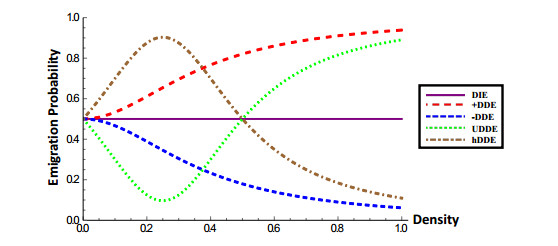
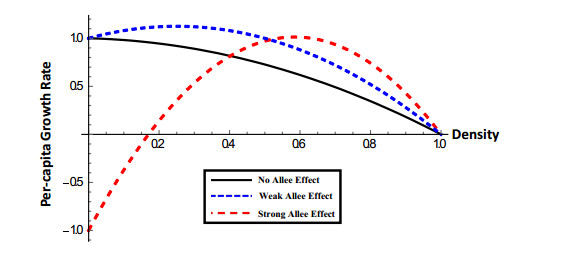

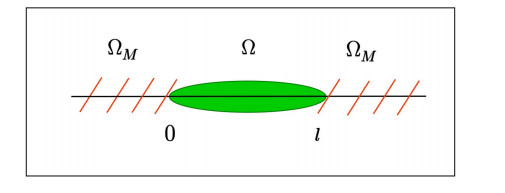
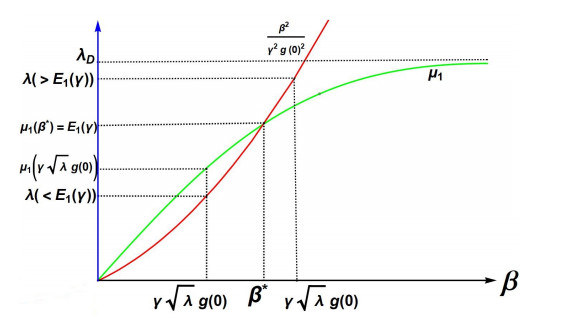
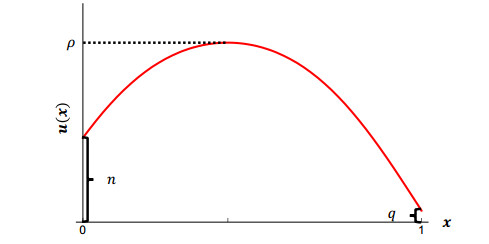
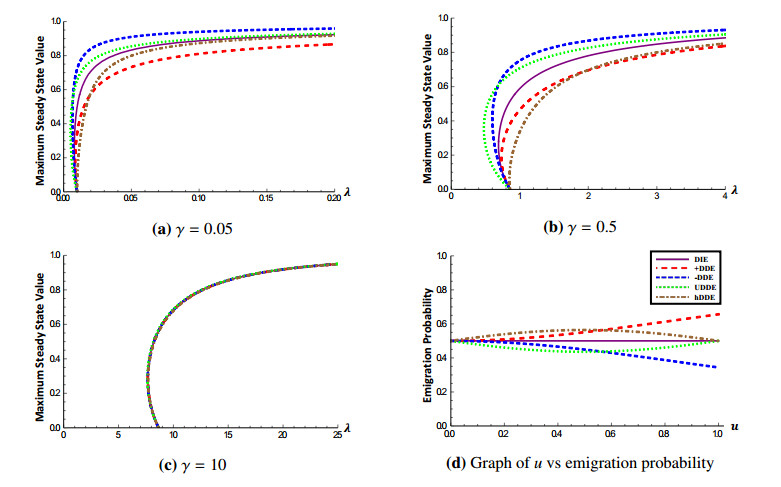
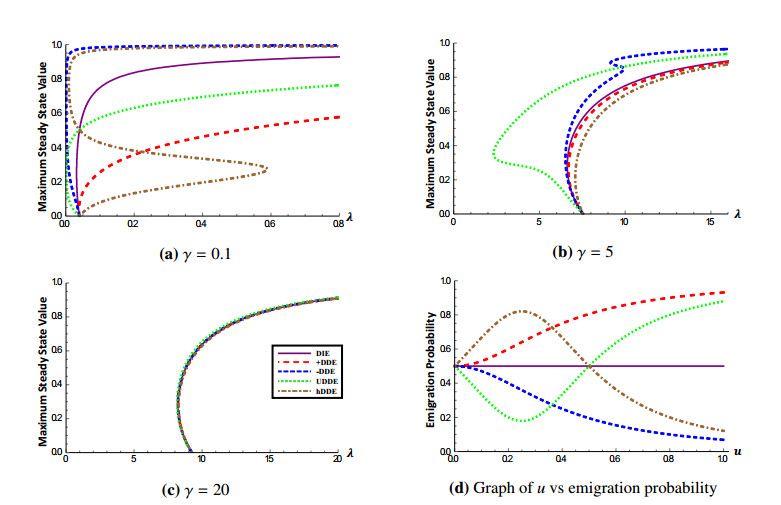



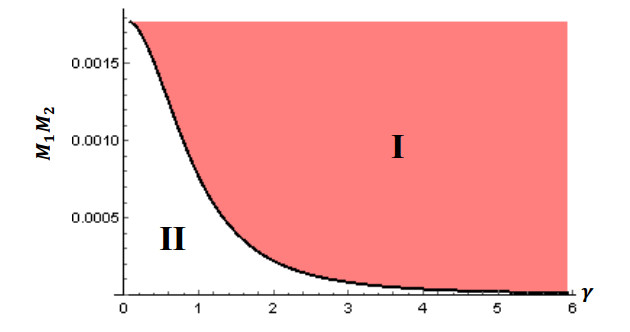

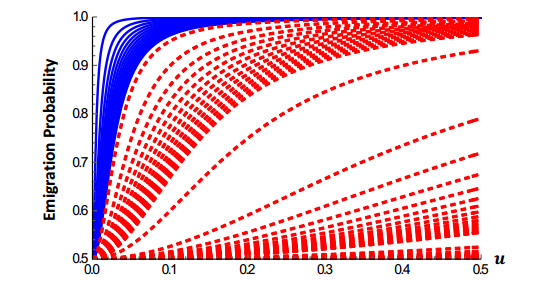




 DownLoad:
DownLoad: